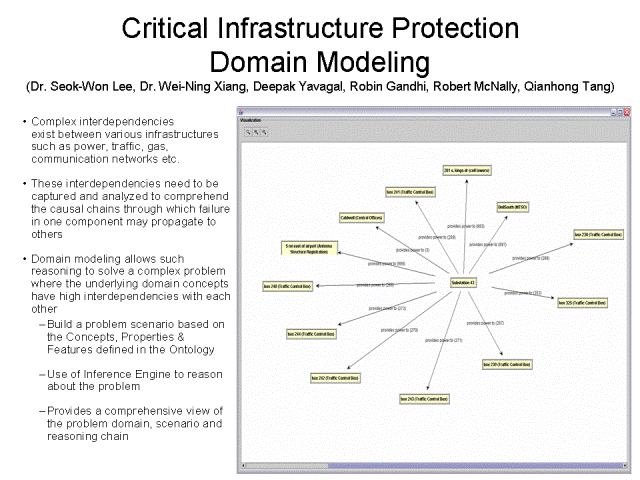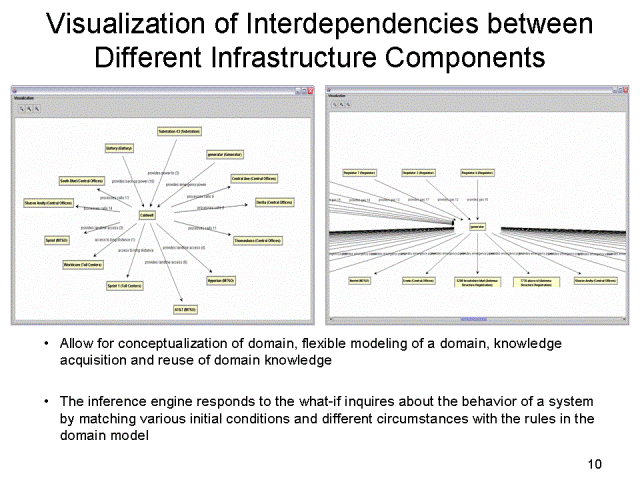 |
 |
|
|
|
|
|
|
Critical Infrastructure
Protection
Domain Knowledge Modeling and Analysis |
|
Project Keywords:
Ontology-based Domain Modeling, Critical Infrastructure,
Geographical Information System, Project Description: A critical
infrastructure (CI) is an array of assets and systems that, if
disrupted, would threaten national security, economy, public
health and safety, and way of life. These include, but are not
limited to, utilities, medical facilities, public
transportation, telecommunication networks, landmarks,
buildings, and public spaces. In recent years, unfortunately,
critical infrastructures have become the symbolic targets, as
well as the mass casualty opportunities, for terrorist attack.
Because of this dual identity of critical infrastructures and
the high level of vulnerability they bear, critical
infrastructure protection (CIP) has topped the list of
priorities in the practice of homeland security planning in the
United States. Since the tragic events of September 11th, 2001,
CIP drills have become an integral part of every
counter-terrorism exercise across the country.
Selected Documents/Publications: McNally, R., Lee, S.W. and Xiang, W-N. Abstract: “An Ontology-based Approach for Representing and Visualizing Interdependencies across Critical Infrastructures” In Proceedings of the 9th International Computers in Urban Planning and Urban Management Conference (CUPUM ’05), June 29 – July 1. University College London. McNally, R., Lee, S.W., Yavagal, D.S. and Xiang, W-N. “An Ontology-driven Approach to Representing and Visualizing Critical Infrastructure Interdependencies”, In Proceedings of the Auto-Carto 05, A CaGIS Research Symposium, March 18-23, Las Vegas. The Cartography and Geographic Information Society (CaGIS). 2005. McNally, R., Lee, S.W., Yavagal, D.S. and Xiang, W-N. Abstract: “An Object-Oriented Method For Representing And Visualizing Interdependencies Across Critical Infrastructure Layers”, Abstract: The 2005 Meeting of The Association of American Geographers (AAG ‘05), 101st AAG Annual Meeting, April 5-9, Denver, Colorado. 2005. |
|
|
||||||
|

